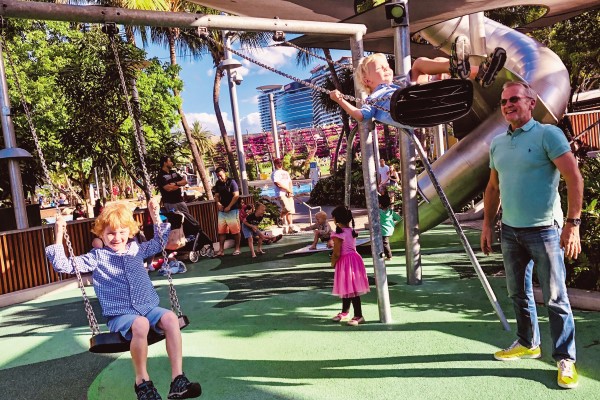The Power of Play
January 01, 2021
The essential place of unstructured school time outdoors in the early learning of children

A few years ago, I got an opportunity to teach at Harvard University. My wife, our 3-year-old son and I packed our things and moved from Helsinki, Finland, to Boston, Mass., for what ended up being a three-year-long social experiment of a Finnish family living in the U.S. with a young child.
One question trumped all others: Where to find a kindergarten for our child? We found that the answer was not easy.
In Finland, it hadn’t been an issue for us or for any other parents. There, all children have a right to high-quality early childhood education that is either totally free of charge or heavily subsidized by the local public authorities. “High quality” in Finland means that children’s days in kindergartens are planned around active outdoor play, playful learning indoors and daily healthy nutrition and afternoon naps. No child is pressured to learn to read or do math before starting primary school at age 7. No pressure for the kids, no pressure for moms and dads.
Our experience in the United States, and more recently in Australia where we currently live, was quite different. Many kindergartens, often called early learning centers or academies, prepare children to enter primary school as young as the age of 2. When looking for a suitable kindergarten for our son in the Boston area, we often were asked, “How many letters does your son know?” and “Can he add up any numbers yet?”
For us, a kindergarten that offers rich music, dance, arts and play experiences daily were more what we preferred. In the end, after multiple visits we decided to rely on great neighborhood playgrounds and community clubs for children. The cost of early child-hood programs also was far more than we could have afforded.
This Content is Exclusive to Members
AASA Member? Login to Access the Full Resource
Not a Member? Join Now | Learn More About Membership
Unstructured Play Benefits the School Day
Four superintendents — two in Texas and two in Oklahoma — are true believers in the power of play. They have seen how students excel academically at the same time they grow physically, socially and emotionally.
These school districts work with Debbie Rhea, professor of kinesiology at the Texas Christian University, who directs the LiiNK Project that aims at improved brain development through physical activity and free play during school days. Her LiiNK team helped these districts implement four 15-minute unstructured outdoor recess breaks into daily schedules of every elementary school.
LiiNK schools are expected to put in place these three facets:
- Teachers may not withhold recess as a punishment or use the time for tutoring;
- No balls or technology is permitted on the playground (which results in fewer conflicts and more collaborative play); and
- Teachers are present to ensure safety, but play no organizing role in the outdoors.
The impact of extra play time during the school day is interesting. The evidence shows children maintain healthy weights, focus better on learning, show increased creativity and problem solving on the playground and appear happier and less anxious.
Principals report declines in discipline issues, and teachers report benefits to their own well-being as a result of their ability to go out with the children for breaks.
Parents, in the studies of participants, say their children had increased appetites for healthy food and slept better.
Play in Australia
My own children go to a lovely neighborhood school in Sydney, Australia. Kensington Public School, like many other primary schools here, recently increased time for free play during the school day. Since the start of this school year, the daily schedule includes four play breaks, up from two that left many children short of time for real play. My kids love this change, as do most of their friends.
According to the principal, more daily play has similar benefits to those observed in LiiNK schools. When she asked all students, more than 75 percent said they like having more play breaks during school days. Teachers saw improved student engagement in class and greater attention to learning after play breaks.
Other schools in Sydney are inspired by the power of increased play time. However, finding a balance between the pressure to perform academically and having more time to play is a continuing struggle in many schools. As in the LiiNK project, reliable evidence of the benefits of play is needed to persuade decision makers about the power of play for healthier and happier children.
Advertisement
Advertisement
Advertisement
Advertisement


